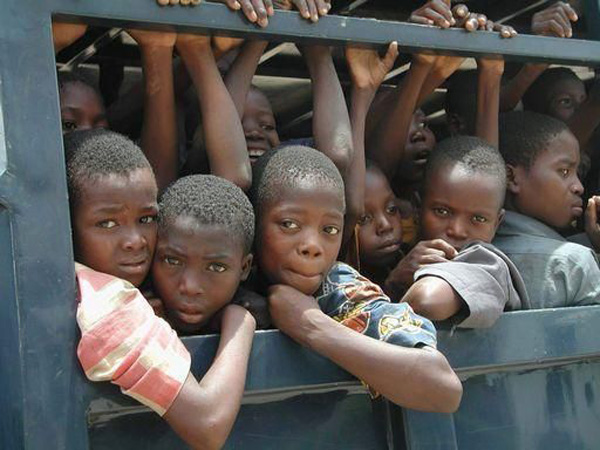Protecting Children From Human Trafficking …C0NTINUE READING HERE >>>
On July 30, the international community marked the World Day Against Trafficking in Persons. This year’s theme, “Leave No Child Behind in the Fight Against Human Trafficking”, focuses on the need for inclusive and focused efforts to protect children.
The scourge of human trafficking continues to plague societies worldwide, with children bearing a disproportionate burden of this modern-day slavery.
According to the United Nations Office on Drugs and Crime, children account for one in three trafficked victims globally. Even more alarming, in regions like Sub-Saharan Africa, North Africa, and parts of Latin America and the Caribbean, children make up 60 per cent of detected trafficking victims.
These young lives are exploited for forced labor, sexual abuse, illegal adoption, recruitment into armed forces, and other heinous purposes.
The causes of child trafficking are as diverse as they are complex. Poverty, inadequate support for unaccompanied minors, armed conflicts, dysfunctional families, and lack of parental care all contribute to children’s vulnerability.
The proliferation of online platforms has added another layer of risk, as traffickers exploit technology to recruit victims and evade detection.
Sadly, Nigeria serves as a microcosm of the global trafficking crisis. As both a source, transit, and destination country for human trafficking, Nigeria grapples with internal and cross-border exploitation. The 2023 Global Slavery Index ranks Nigeria 38th out of 160 countries with the highest number of slaves – an estimated 1.6 million people.
According to the National Agency for the Prevention of Trafficking In Persons (NAPTIP‘s) statistics from 2019- 2022, 61 per cent of human trafficking in Nigeria happens internally, while 39 per cent is generated from cross-border trafficking. It is the third most common crime in Nigeria after drug trafficking and economic fraud (UNESCO, 2006).
According to the United States Department of State 2023 report on trafficked persons, the Nigerian government “identified 1,634 trafficking victims, including 841 sex trafficking victims, 543 labour trafficking victims, and 250 victims of unspecified forms of trafficking; compared with identifying 935 victims the previous reporting period.”
The human cost of this crime is immeasurable. Women and girls trafficked for sexual exploitation endure unimaginable physical and psychological trauma. Children forced into labor or begging are robbed of their education, health, and the safety every child deserves.
The scars of such exploitation can last a lifetime, perpetuating cycles of poverty and undermining the very fabric of communities.
While the Nigerian government has made efforts to combat trafficking – as evidenced by its Tier 2 ranking in the U.S. State Department’s Trafficking in Persons Report – much work remains to be done.
The identification and protection of child victims remain challenging due to underreporting, lack of awareness, and inadequate resources for victim support services.
The fight against human trafficking, particularly child trafficking, requires a multi-faceted and coordinated approach. First and foremost, we must address the root causes that make children vulnerable to exploitation. This means tackling poverty, improving education and social services, and strengthening child protection systems.
Law enforcement efforts must be bolstered to identify and prosecute traffickers more effectively. This includes enhanced training for police, border officials, and social workers to recognize signs of trafficking and respond appropriately.
Cross-border cooperation is crucial, as trafficking networks often operate across national boundaries.
Technology companies must also play their part in making online spaces safer for children. Improved monitoring and reporting systems can help identify potential trafficking activities and protect vulnerable users.
Rehabilitation and reintegration of trafficking survivors, especially children, should be a priority. This requires comprehensive support services, including medical care, psychological counseling, education, and job training to help survivors rebuild their lives and reduce the risk of re-trafficking.
Public awareness is another crucial component. Communities must be educated about the realities of human trafficking, how to recognize potential victims, and where to report suspicious activities. Schools can play a vital role in teaching children about online safety and the tactics used by traffickers.
The private sector also has a responsibility to ensure their supply chains are free from forced labor and child exploitation. Businesses should implement rigorous due diligence processes and support initiatives that combat trafficking.
International cooperation is essential in this global fight. Countries must work together to share intelligence, harmonize laws, and coordinate enforcement efforts.
The fight against human trafficking, especially child trafficking, is not just a matter of law enforcement or social policy. It is a moral imperative that speaks to the very heart of our shared humanity. Every child deserves to grow up free from exploitation, with the opportunity to learn, play, and reach their full potential.
As a global community, we must redouble our efforts to combat this modern-day slavery. We must ensure that no child is left behind in the fight against human trafficking.
>
